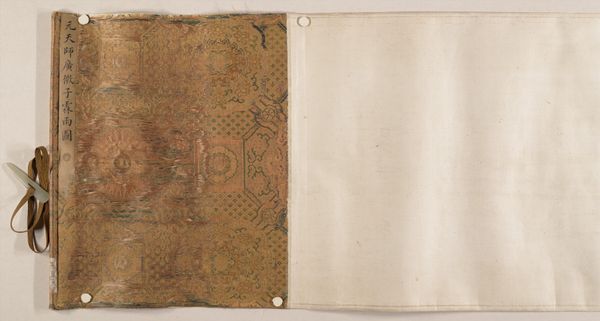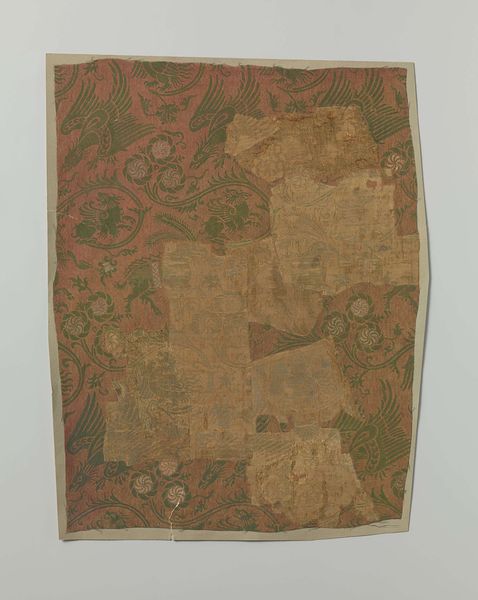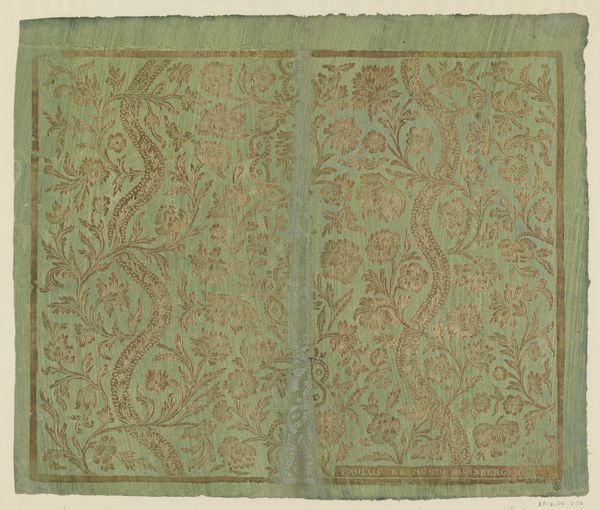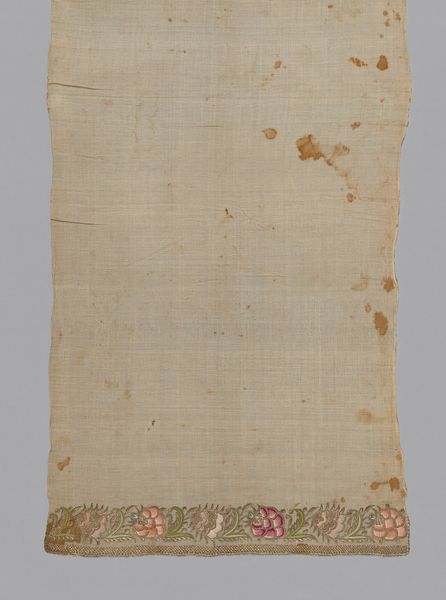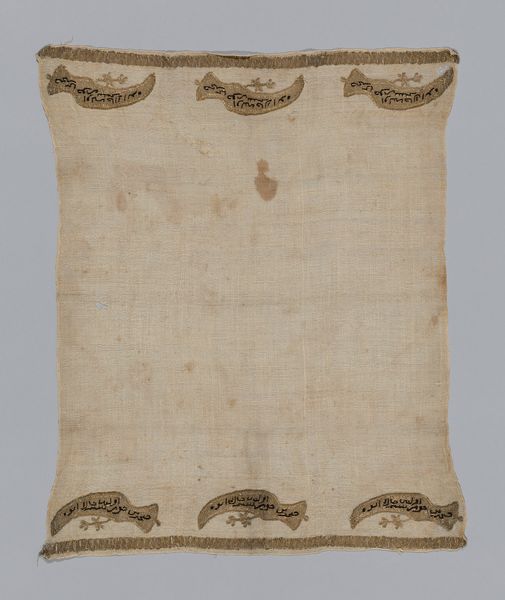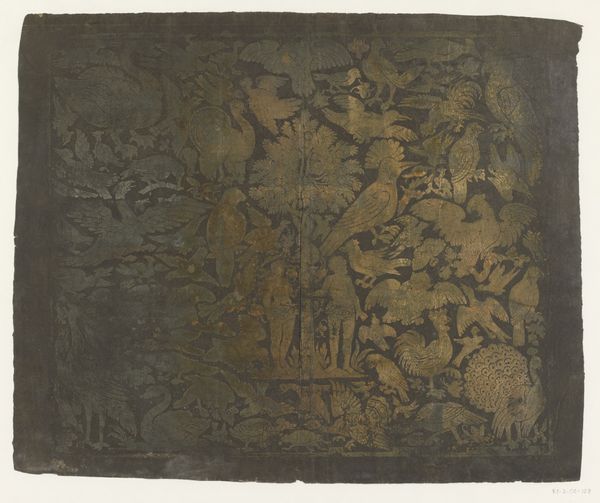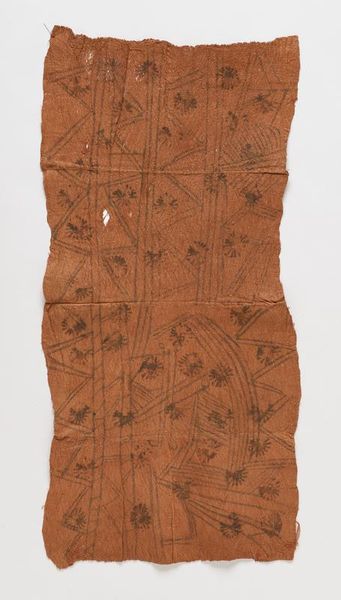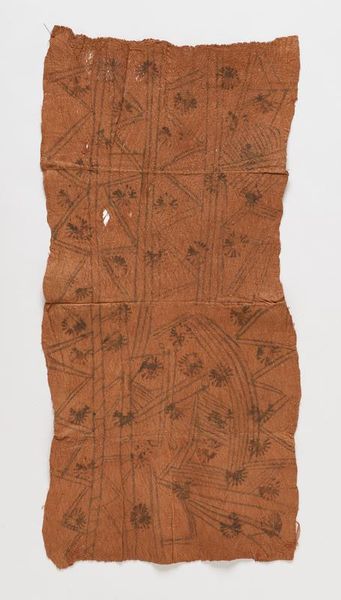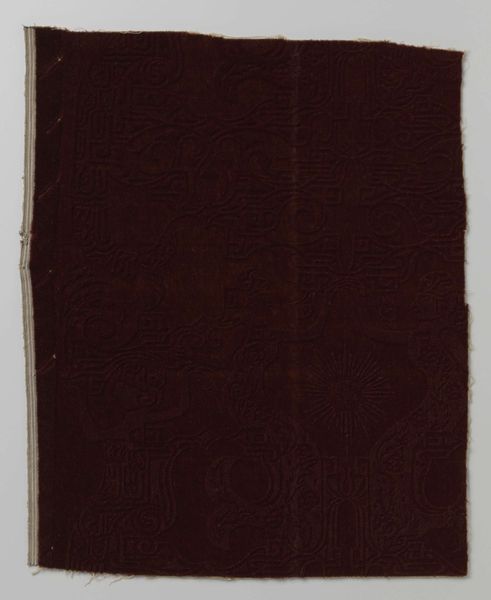
fibre-art, weaving, textile
#
fibre-art
#
art-nouveau
#
weaving
#
textile
#
figuration
#
geometric
#
decorative-art
Dimensions: height 83 cm, width 67 cm
Copyright: Rijks Museum: Open Domain
Editor: This fragment of interior fabric, titled "Zeenymphen," was designed in 1918 by Carel Adolph Lion Cachet. It's currently housed at the Rijksmuseum. It's difficult to see the full image, but it gives me the impression of depth despite appearing rather flat. What catches your eye? Curator: My attention is drawn to the interplay between figuration and abstraction. Note how the nymph figures, though discernible, are integrated into a field of geometric and curvilinear forms. Observe, for example, the repeated use of meander patterns which construct and confine. Editor: Yes, I noticed those repeating lines; they create almost a maze-like effect! Do you think that repetitive pattern reflects the design style? Curator: Precisely. It echoes the aesthetic principles of Art Nouveau. Note the flattened perspective and emphasis on ornamentation, rejecting illusionistic depth in favor of surface design. Observe the visual tension between the organic and the geometric motifs: do they seem harmonious or discordant? Editor: They seem to work together to me. Is it possible the muted color palette flattens the imagery as well? Curator: That’s an astute observation. The monochromatic palette, limits tonal variations and draws focus towards the texture and form. The effect promotes visual coherence within the piece, so the structure truly reinforces the message. Editor: I had never thought to focus on the geometry within Art Nouveau; thanks to this lens, I understand so much better! Curator: It reveals how a focused examination can unlock meaning by relating individual aspects to one another, as pieces fitting together in this aesthetic puzzle.
Comments
No comments
Be the first to comment and join the conversation on the ultimate creative platform.

